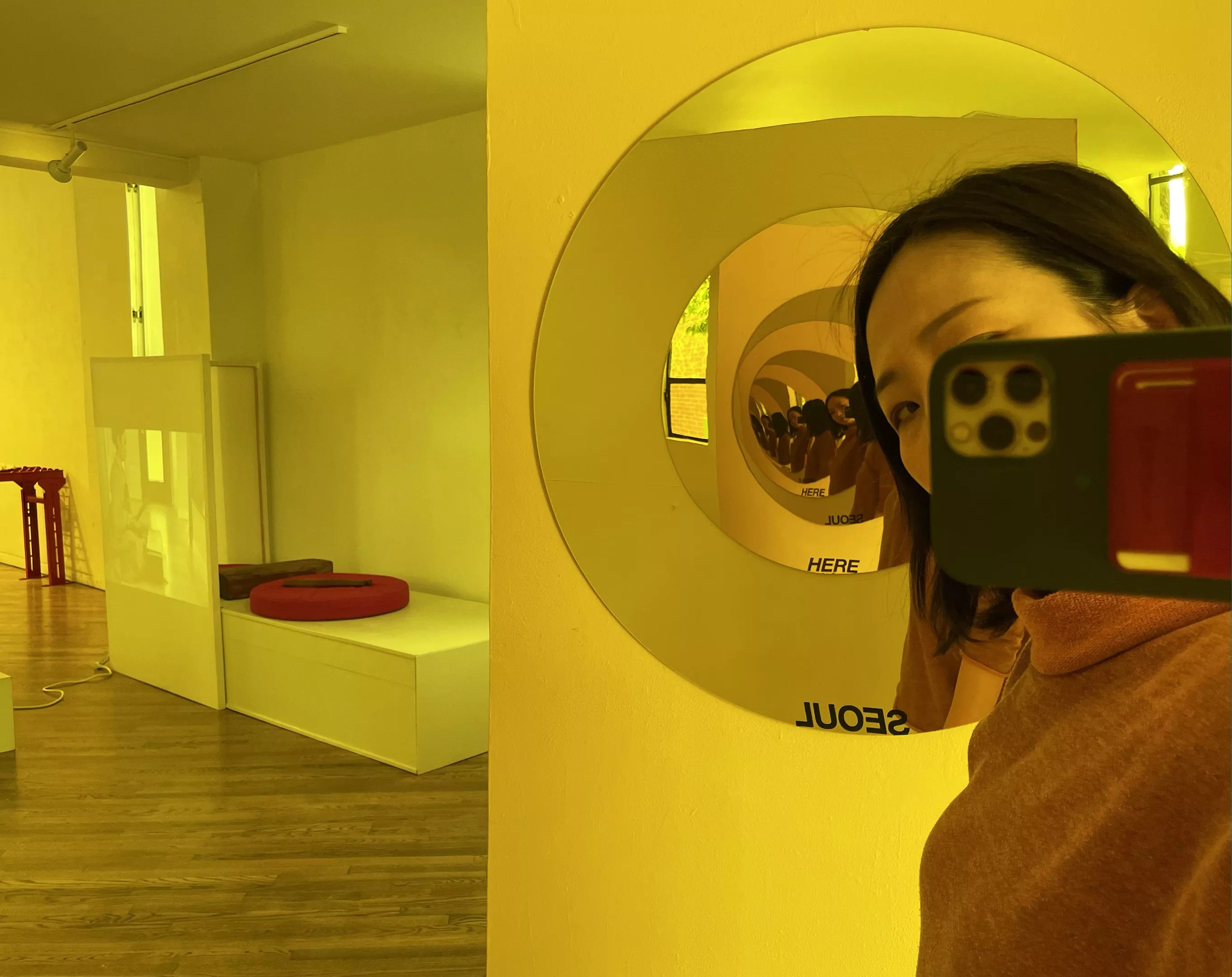
Courtesy of Sammy Lee

Audio By Carbonatix
In artist Sammy Lee’s double-edged world, it’s no metaphor to say “Art is life.” That’s simply her truth, the ruling principle of her singular practice, and her life, though she uses metaphors again and again – not just to make a point, but to also find common ground.
Born in Seoul, South Korea, Lee arrived in the U.S. as a sixteen-year-old immigrant new to American culture while still caught in the Korean culture in which she grew up. Many years later, she is still dissecting the cross-cultural essence of her life, using the language – and in her case, the visceral process – of art.
Lee’s most integral art-making process, joomchi, is a traditional Korean method of paper-felting using sheets of a super-durable, grain-free mulberry paper called hanji, which is vigorously and rhythmically hand-beaten into a moldable material. Lee uses the felted paper in a variety of ways: to wrap and cast suitcases, table settings and shop signs, as well as other components of her installations.
With that in mind, Sammy Lee: Remind Me Tomorrow, Lee’s comprehensive exhibition now on view at the University of Colorado Denver’s Emmanuel Gallery, comes together as a personal-history museum, with each element serving as a connective diorama, right down to the artist’s most essential process of felting paper.
This year, make your gift count –
Invest in local news that matters.
Our work is funded by readers like you who make voluntary gifts because they value our work and want to see it continue. Make a contribution today to help us reach our $50,000 goal!
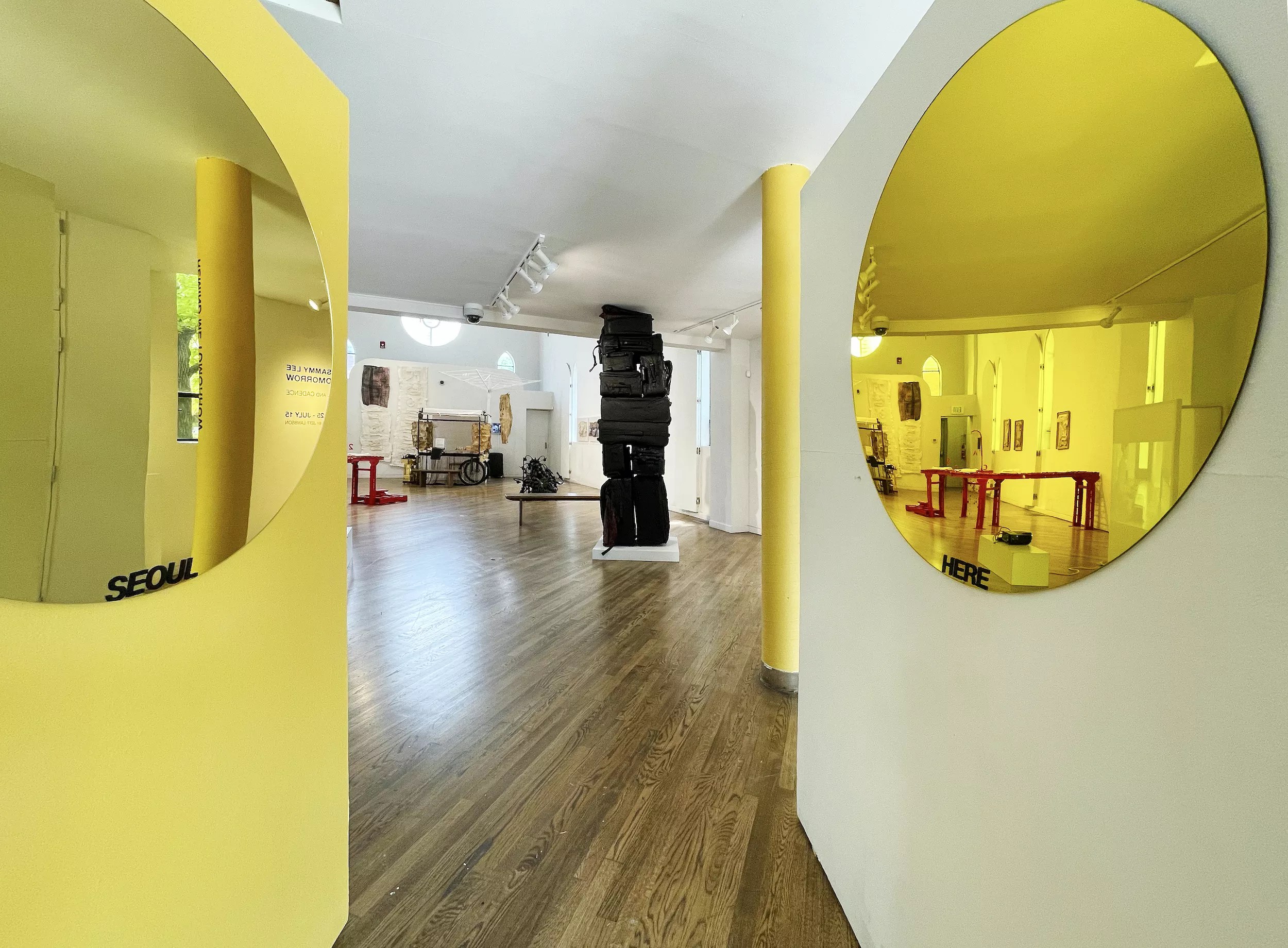
Sammy Lee, “In(de)finite.” 2020, yellow, gold mirrors, acrylic.
Courtesy of Sammy Lee
Remind Me Tomorrow begins by inviting non-Asians to step into Korean culture. “As you come into the Asian space, the entryway is important,” Lee says, explaining how the Korean arch under which one must enter the main gallery space guides visitors through a very short doorway. “It forces a person to bow slightly when entering,” she adds, noting how bowing is a traditional mode of greeting in Korea.
“These interventions will ready your mind for the infinite reflections of the yellow-person mirrors,” Lee continues, stepping inside. Lee points the way to a narrow space where two yellow-and-gold-tinted mirrors face one another, showing white viewers what it might look like to have yellow skin as they register their own inner reactions, which are sometimes not so positive.
Lee breaks it down: “It’s meant to create a sense of not belonging in one place. Korea is not fully where I belong, and neither is Denver. I go back and forth. In Korea, you would never have two mirrors facing each other. It would be thought of as soul-sucking.”
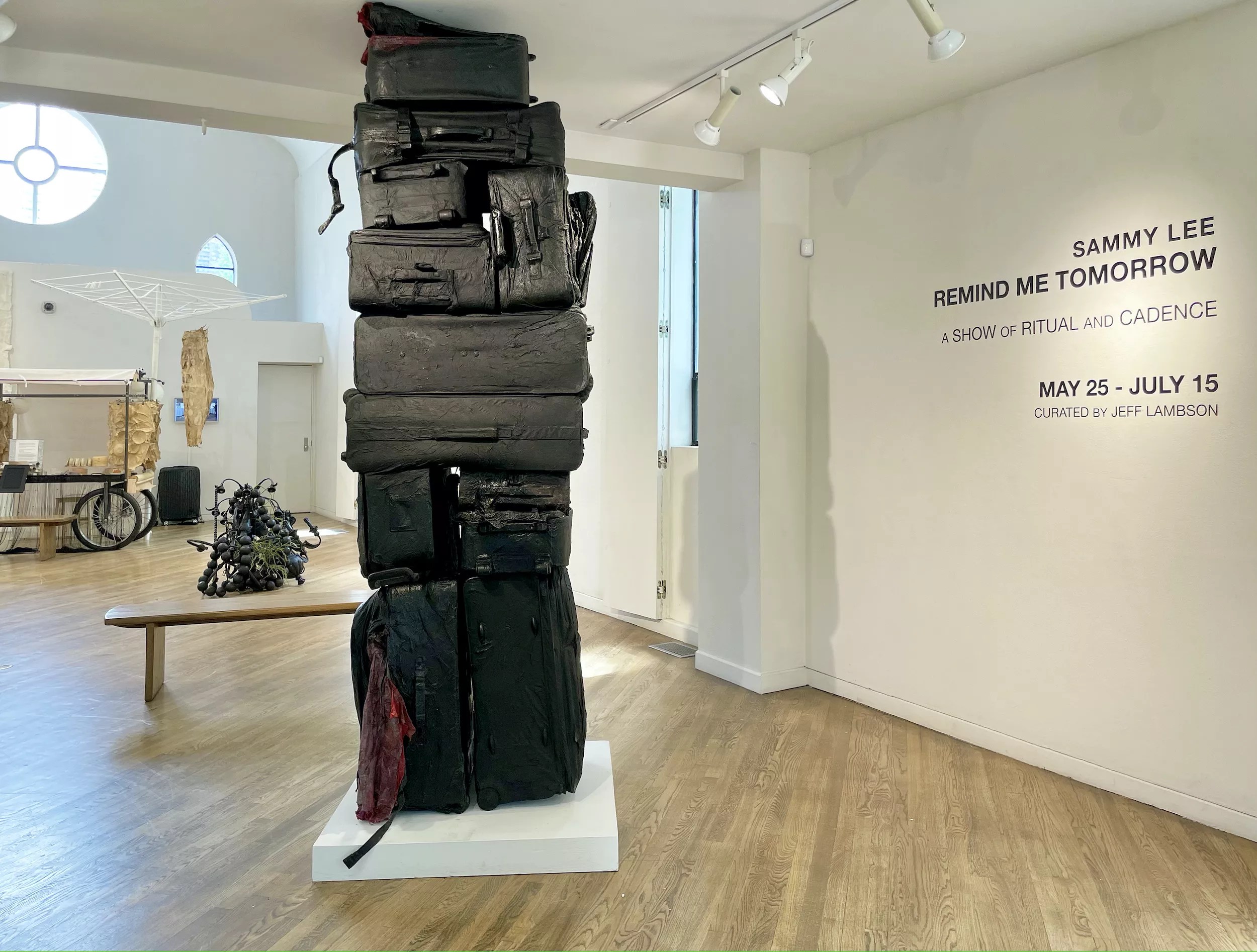
Sammy Lee, “FOB, Arrived,” 2016-ongoing, suitcases, hanji, balls, acrylic varnishes.
Courtesy of Sammy Lee
Beyond the disorientation of the infinite mirrors, a ceiling-high stack of bulging, ragged luggage wrapped in a skin of black paper looms like a fragile Tower of Pisa, leading people into a contemplation on the immigrant experience.
“Immigrants must narrow down what they pack in a way that’s unique to the immigrant experience,” Lee notes. Like the tower of baggage itself, it’s a balancing act of what one needs and what’s expendable that never quite finds perfection. Once the traveler lands in a new place, things can be precarious: “The tower might collapse. If that happens, the immigrant’s story will fall like dominoes.”
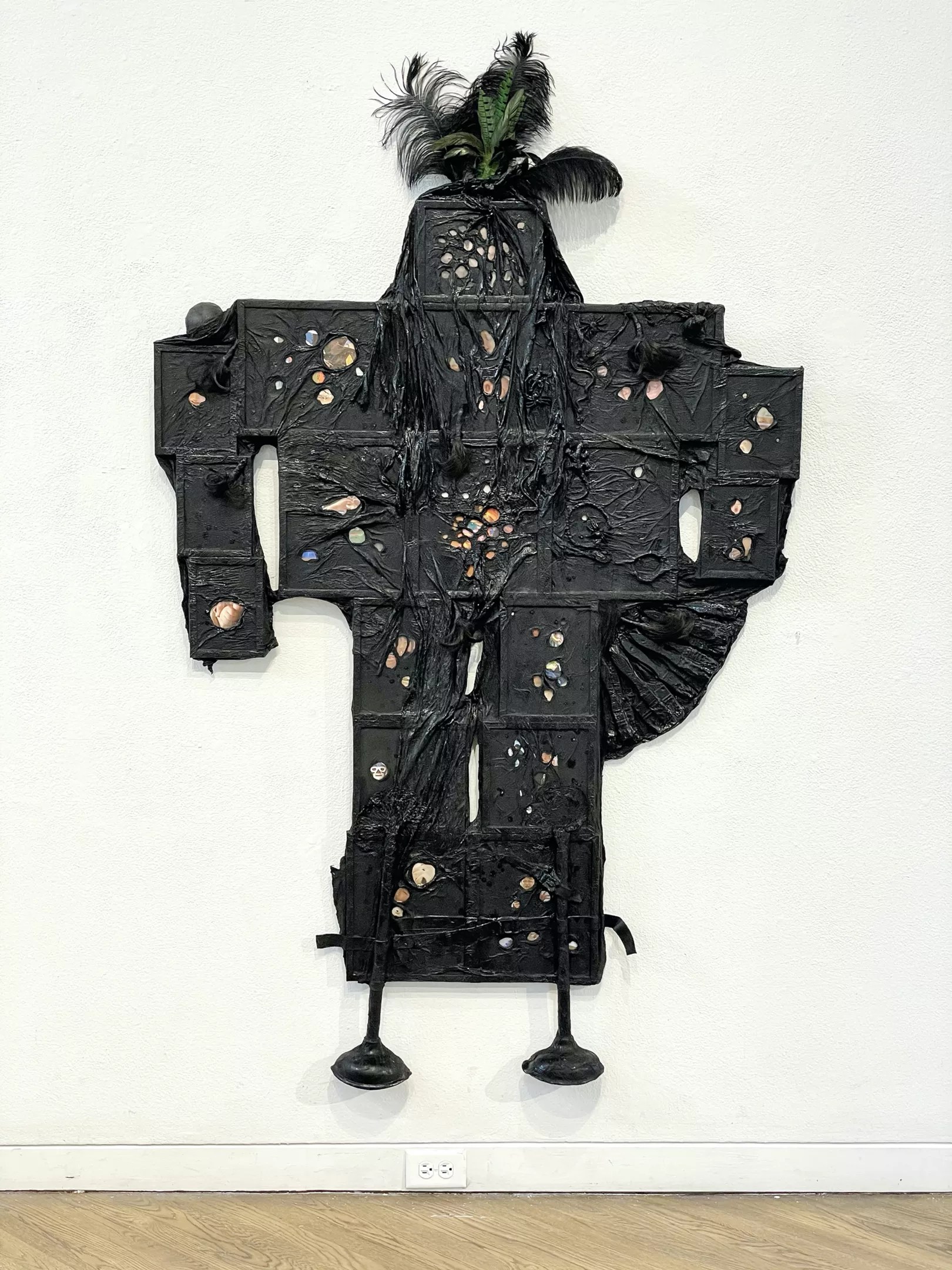
Sammy Lee, “Mamabot, hindsight,” 2020, archival photos, photo frames, papers, feathers, small plastic toys.
Courtesy of Sammy Lee
As Lee parses out her many roles in life through installation work, she sets her sights on the travails of motherhood, which can be mixed bag of treasured moments and tedium. In a work Lee calls “Mamabot, hindsight,” a black “bot” shape is plastered flat against the wall, perhaps as a comment on the weight of Lee’s domestic side, versus her freer persona as an artist.
The super-heroic “Mamabot,” festooned with embedded family photographs, plastic toys and other symbols of child-rearing, represents how the artist, caring for the home while parenting small children, sometimes needs to turn on a dark and funny robotic separation from dull reality, even as tears fall from her eyes.
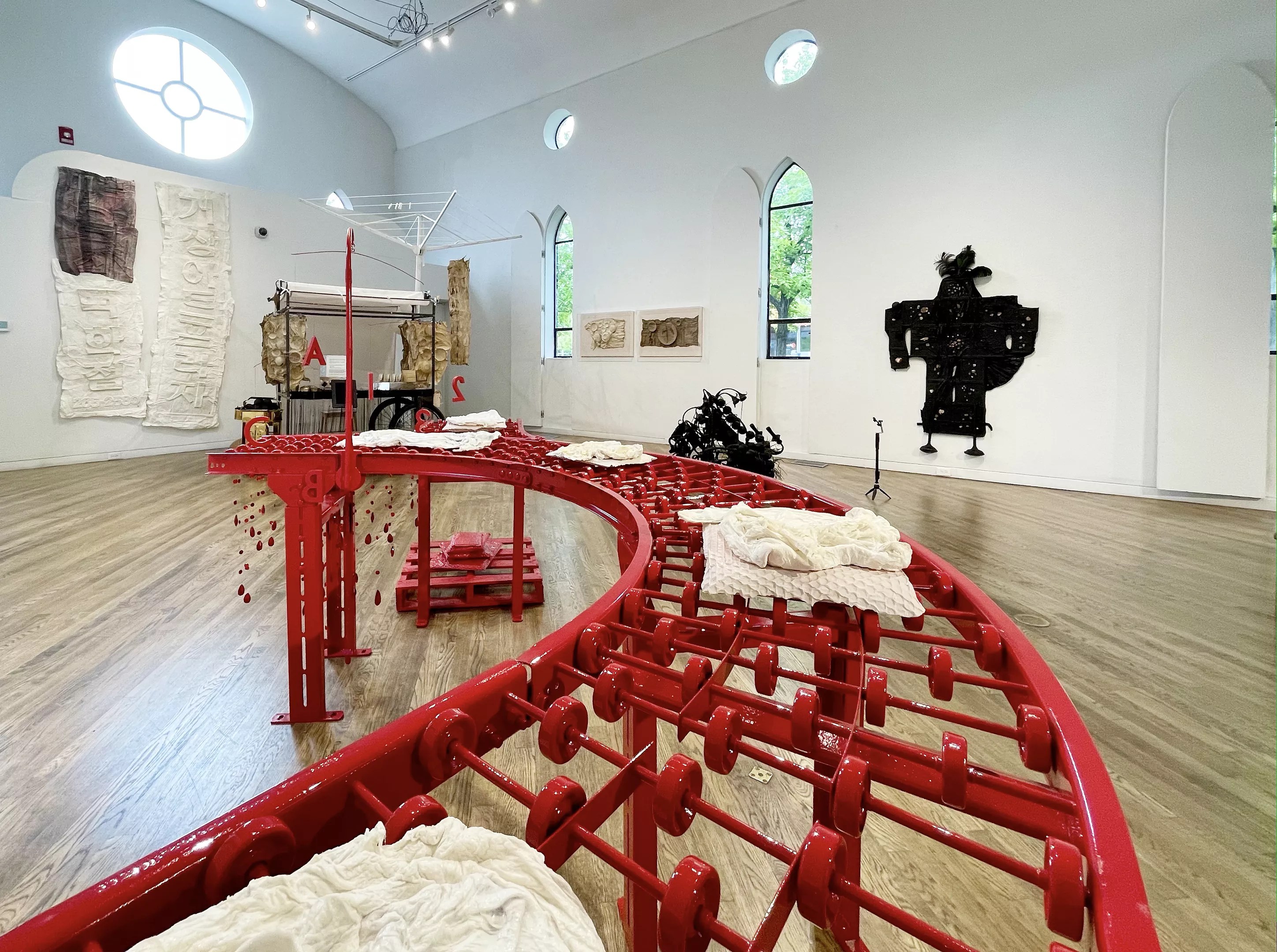
Sammy Lee, “Changing Station,” 2019, conveyor belt, hanji, onesies, crystals.
Courtesy of Sammy Lee
Another installation, “Changing Station,” riffs on a similar theme. A conveyor-belt contraption that controls the seemingly endless march of diaper changes one encounters with a new infant, operates efficiently, like a one-man assembly line, one diaper after another.
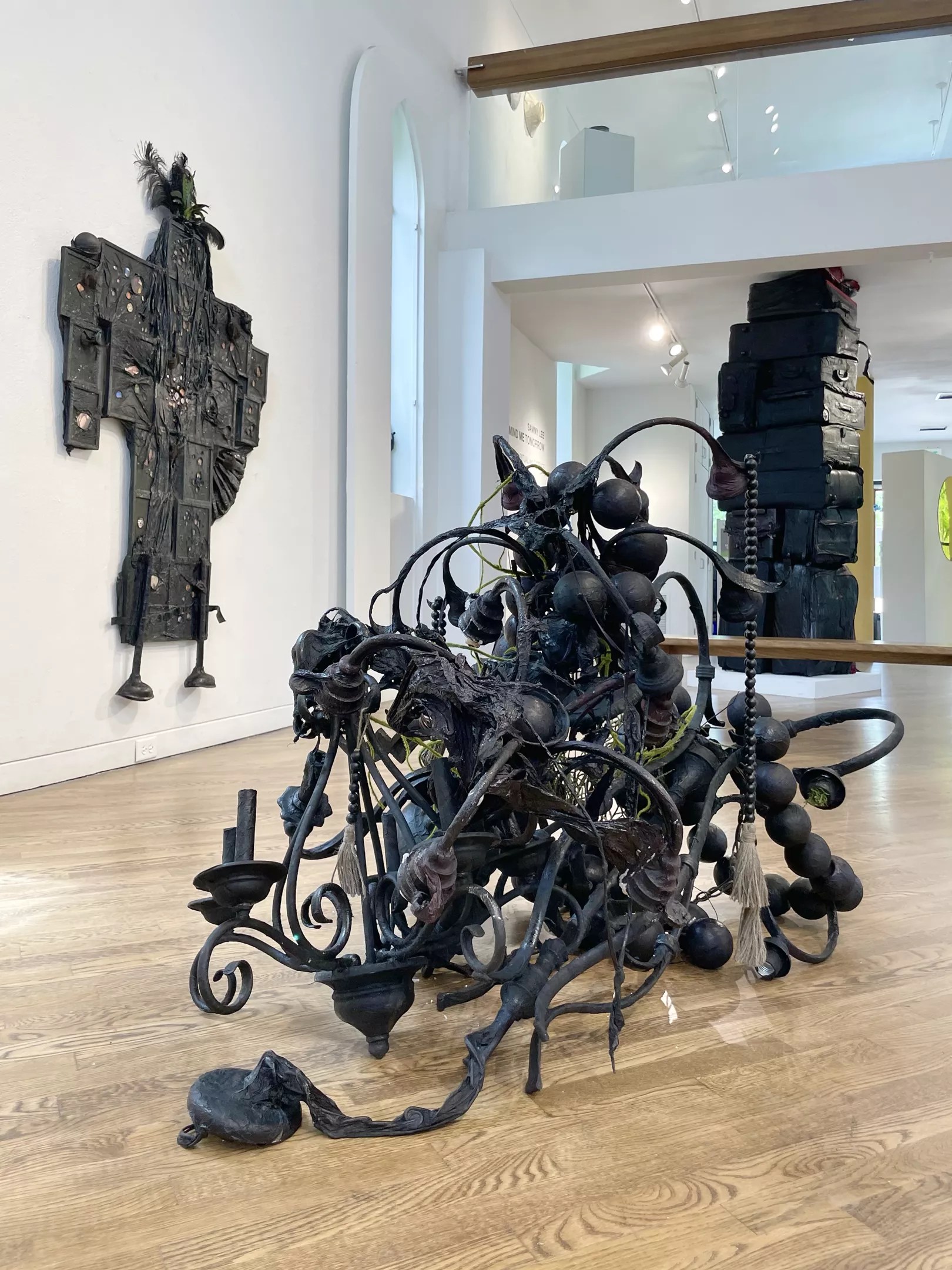
Sammy Lee, “Chandeliers,” 2019, various sized chandeliers, hanji, silk flowers, ribbons, beads, acrylic varnishes.
Courtesy of Sammy Lee
In other works, Lee mines her background in the study of architecture and furniture design for another angle. The sculpture “Chandeliers,” a black tangle of chandelier parts piled with dry moss and decorated with silk flowers, ribbons and beads, represents another side of domesticity. “Chandeliers are the antithesis to robots,” she says. “I think of them as shining above the table at a perfect dinner party,” reflecting a more evolved vision of femininity. Sammy Lee, “Street Art Cart, 2018, installation. steel tube, linen, bicycle wheel, suitcase. Courtesy of Sammy Lee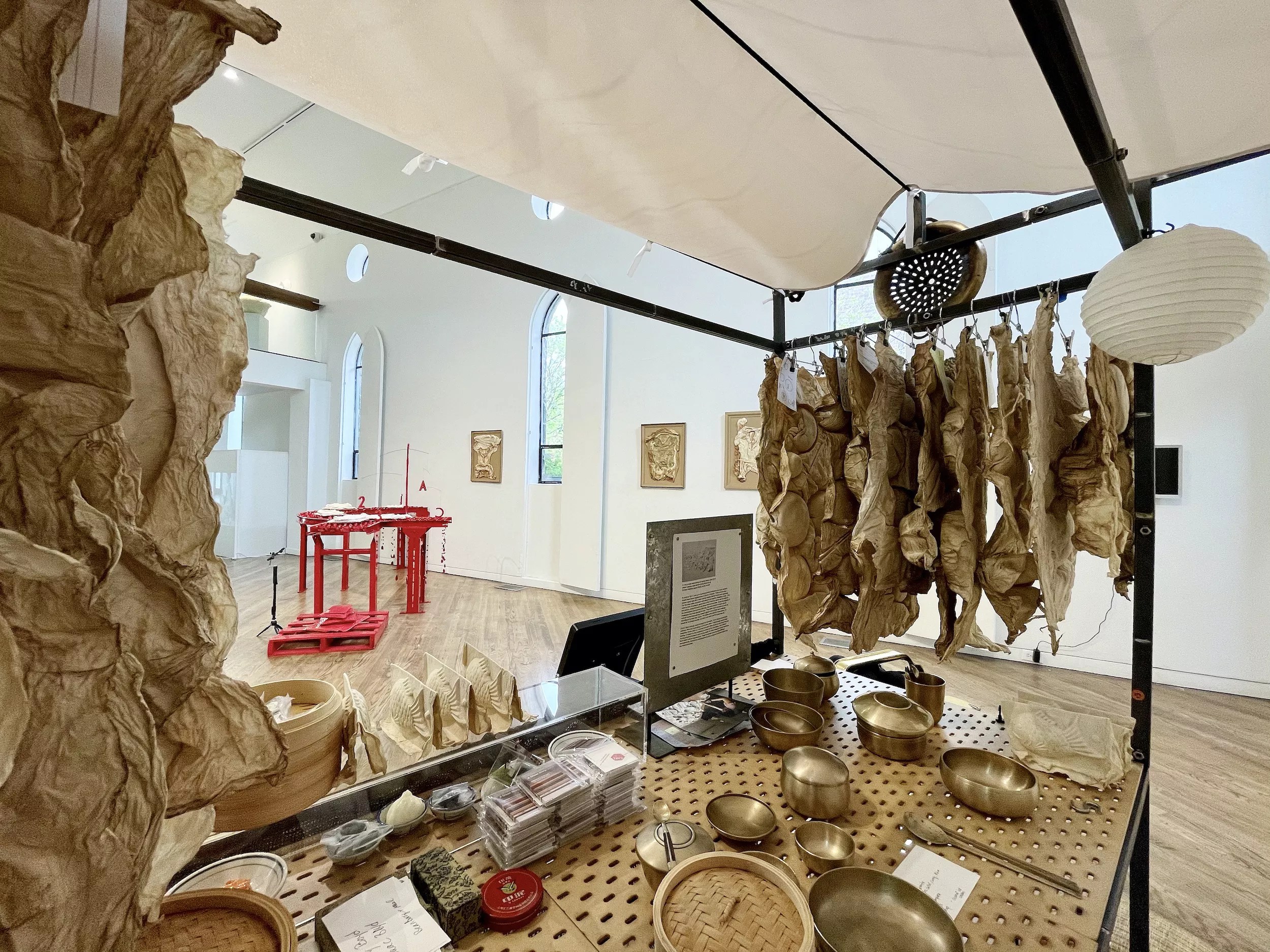
It’s a fine introduction to Lee’s predilection as an artist for raising community, especially as it forms around meals. She’s known for her hanji-cast table settings that recall special dinner parties, including the first she attended in the U.S., and a meal as simple as an ordinary lunchtime repast.
A couple of these hang on the wall in molded neutral colors, but they lead straight on to Lee’s performative “Street Art Cart,” an ingenious structure comprising steel tubes and linen that folds up to fit in a suitcase, made mobile by an expendable bike wheel. Instead of street food, the cart is meant to peddle studio art experiences that are, at least at Emmanuel Gallery, inspired by food and communal eating.

Sammy Lee, “Street Art Cart,” 2018, “Shop Signs” and “Very Proper Table Setting # 11,” 2021, hanji, acrylic varnish.
Courtesy of Sammy Lee
During the exhibition, Lee will be molding and selling waffle-like paper “fish cakes” and other mementos of the show, as well as inviting gallery-goers to use a set of brass dishes to create their own communal dinners (this humble writer cooked up a Passover dinner for her father, with a tureen of matzo-ball soup, a wine glass, a charoset bowl and an afikoman plate around the basic setting). Lee’s goal is to mold and document each participant’s table setting.
These works and others in Remind Me Tomorrow, including handmade books on the second floor and a “Baoli Station” inspired by a kind of village well where people meet to draw cool water and converse, all further Lee’s constant search for relatable moments and traditions that draw people of all cultures together.
Sammy Lee: Remind Me Tomorrow runs through July 15 at Emmanuel Gallery, 1205 10th Street Plaza, Auraria Campus. The gallery is currently open Wednesdays through Saturdays, 10 a.m. to 2 p.m. daily. Join Sammy Lee at a special opening reception on Thursday, June 17, from 6 to 8 p.m. Find pre-registration details regarding gallery visits at Emmanuel Gallery’s website.